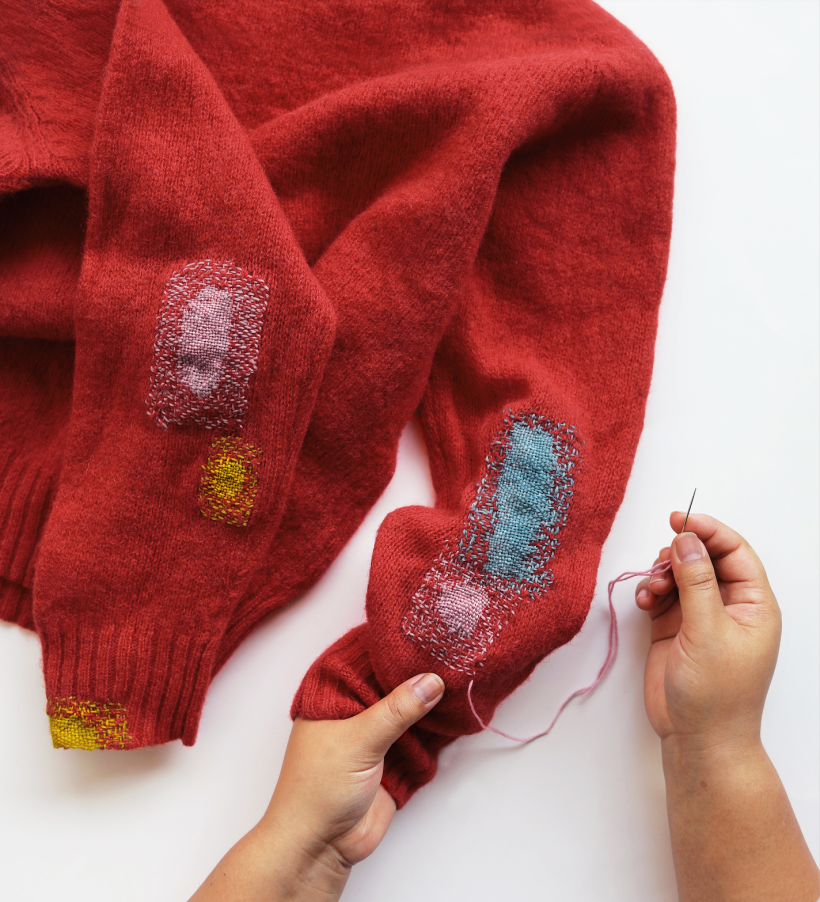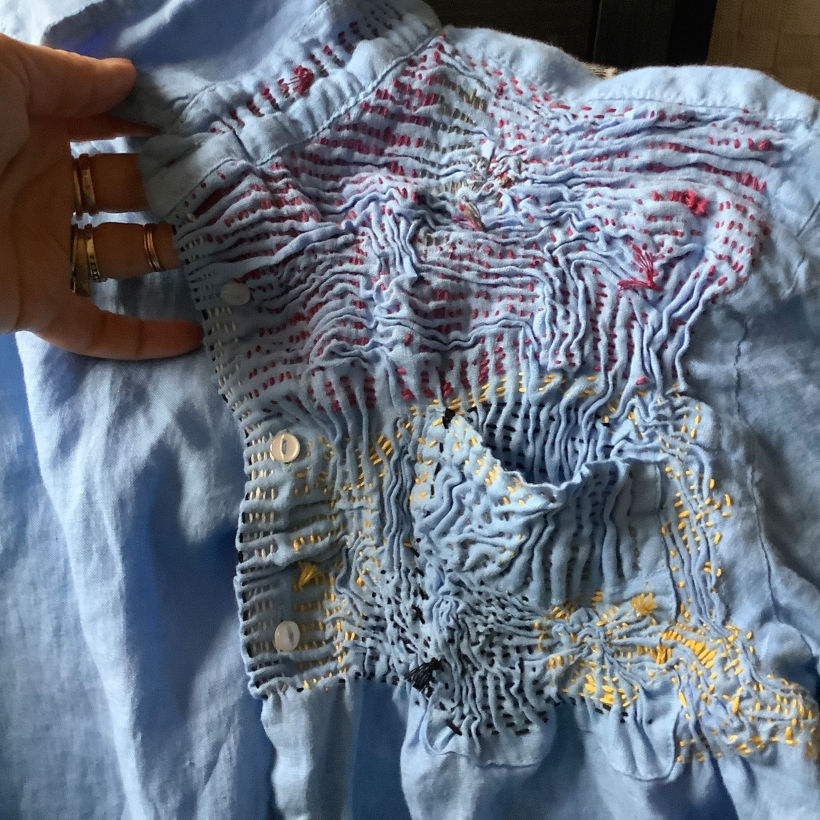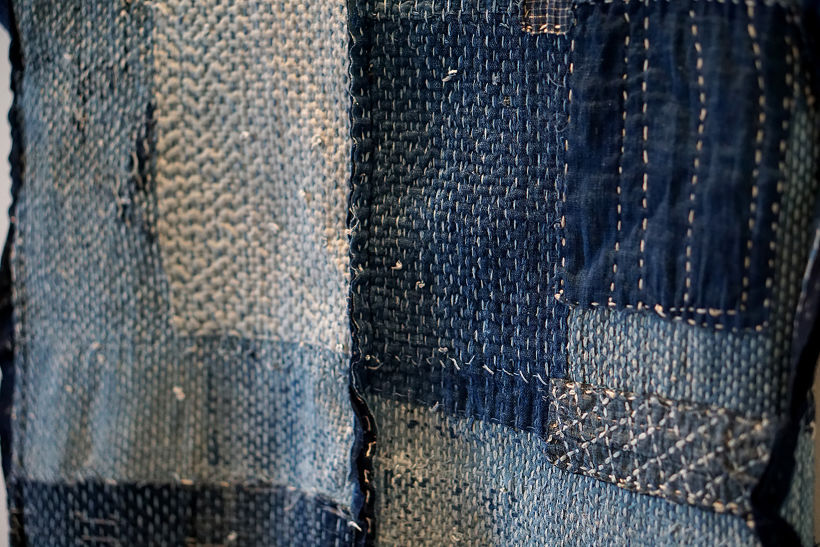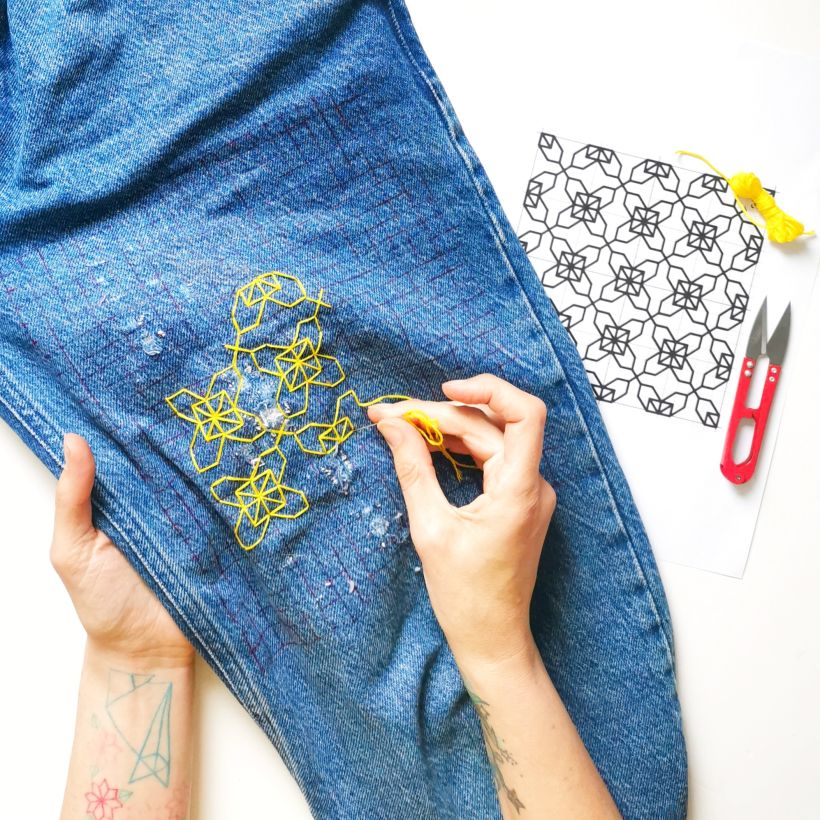@micaela_mh
Curious Minds Podcast: Why Is Mending Stepping Out of the Shadows?
Discover how the visible mending trend transforms moth holes into creative challenges with Curious Minds, an original podcast by Domestika
Curious Minds is an original podcast by Domestika that explores the curiosities and untold histories of the creative world.
Each week we’ll bring you a new episode, interviewing experts and creatives as we dive into the unusual origins of the images, patterns, and designs we take for granted.
Subscribe for free on Apple Podcasts, Spotify, or your favorite podcast app to never miss an episode.
There are a few certainties in life. There's death and taxes, of course, but there's another we rarely talk about. Because no matter who you are, it’s inevitable that at some point you’ll get holes or stains on your clothing.
Traditionally, people haven’t wanted to celebrate those flaws and have done their best to hide the damage. But over the last decade, a new movement called visible mending has turned tradition on its head.
But why bother reworking the same garment, when it’s often cheaper and easier to just buy something new? And why make that repair so attention grabbingly obvious?
In our ninth episode of Curious Minds, we interview textile designer and “Visible Mending” author Arounna Khounnoraj, and Kate Sekules, author of “Mend!: A Refashioning Manual and Manifesto” to understand what has sparked this new mending movement. Upcycling expert and crochet designer Emma Friedlander Collins (also known as @steelandstitch) talks about how mending can be an outlet for creativity, and sashiko instructor Atsushi Futatsuya of Upcycle Stitches explains how this Japanese mending technique represents much more than just stitches on fabric.
You can download the transcript of this episode at the end of this article.
“Somebody, at some point, will have a hole in their garment and their decision is either to keep it, fix it, or to you know, discard it, or to recycle it, or what they do with it,” says Khounnoraj.
That choice to fix our clothes, rather than throw them away, has always been there. But until recently people weren’t proudly outlining grease stains on t-shirts with bright stitches or drawing attention to holes and tears by using contrasting patches and darns.

If you think it sounds a little dramatic to declare that visible mending is a groundbreaking concept, it's important to understand the major creative shift it represents.
“Visible mending is less about closing a hole, and very much more about a design challenge. Your own visible mends are yours, they're like your handwriting,” says Sekules. “Most of the time, there's no reason to be invisible. It's much harder. Invisible mending takes a lot more skill, to be frank.”

Rather than show-off creativity, invisible mending has conventionally been part of the invisible domestic labor performed by women.
That's even true of some traditional though not entirely invisible forms of mending. Sashiko is a form of Japanese hand stitching that you might recognize for its graphic and geometric patterns, often stitched with white thread on indigo-dyed fabric. While its beauty makes it popular with menders today, for centuries the technique was shrouded in shame.
“Sashiko was developed out of necessity,” says Futatsuya. While he’s happy to see sashiko step out of the shadows and to help it reach more people, he adds, “I want to make sure that we upcycle the whole picture, not just.... the convenient part of sashiko… It’s a sign of poverty, [people felt] shameful to have these patched mended clothes.”

That shame around poverty and mending isn’t exclusive to Japan. Just like thrift store shopping used to have a less than flattering reputation but is now considered cool, mending is going through a similar transformation. But there are still populations who face stigma when wearing obviously upcycled clothes, meaning visible mending still has a way to go before it can be accessible to everyone.
On a practical level though, because visible mending often uses scraps of fabric, yarn, and thread, it’s easier to pick up than other craft hobbies because it doesn’t require an upfront investment. “It doesn't matter if you start by doing it badly. You’re going to start by doing it badly because you’ve probably never really done it before. But literally, these are skills that everybody has been using for thousands of years,” says Friedlander-Collins, who feels encouraged to see, “hand making, handcraft, hand mending, and sewing just having a huge revival at the moment. And I think it's really sustainability-led.”

To learn more about how sustainability has shaped the visible mending movement, how in a mass-produced world mending offers a more personal relationship with our wardrobe, and how the technique is a uniquely great way to build crafting confidence, you can listen to Curious Minds on Apple Podcasts, Spotify, or wherever you get your podcasts.
Click on the link below to download a transcript of this episode. It will be saved in your Downloads folder as a PDF.
Join for Free and download
CM S1E9 No Shame in Mending Transcript.pdf
If you'd like to read more stories behind the images, patterns, and designs we take for granted, check out our other blog posts for Curious Minds, an original podcast by Domestika.
You May Also Like:
- Curious Minds Podcast: What do a DC Villain and Marilyn Monroe Have in Common?
- 5 DIY Online Free Classes to Fix your Clothes
- 8 Online Upcycling Courses for Creating and Repairing Garments







0 comments